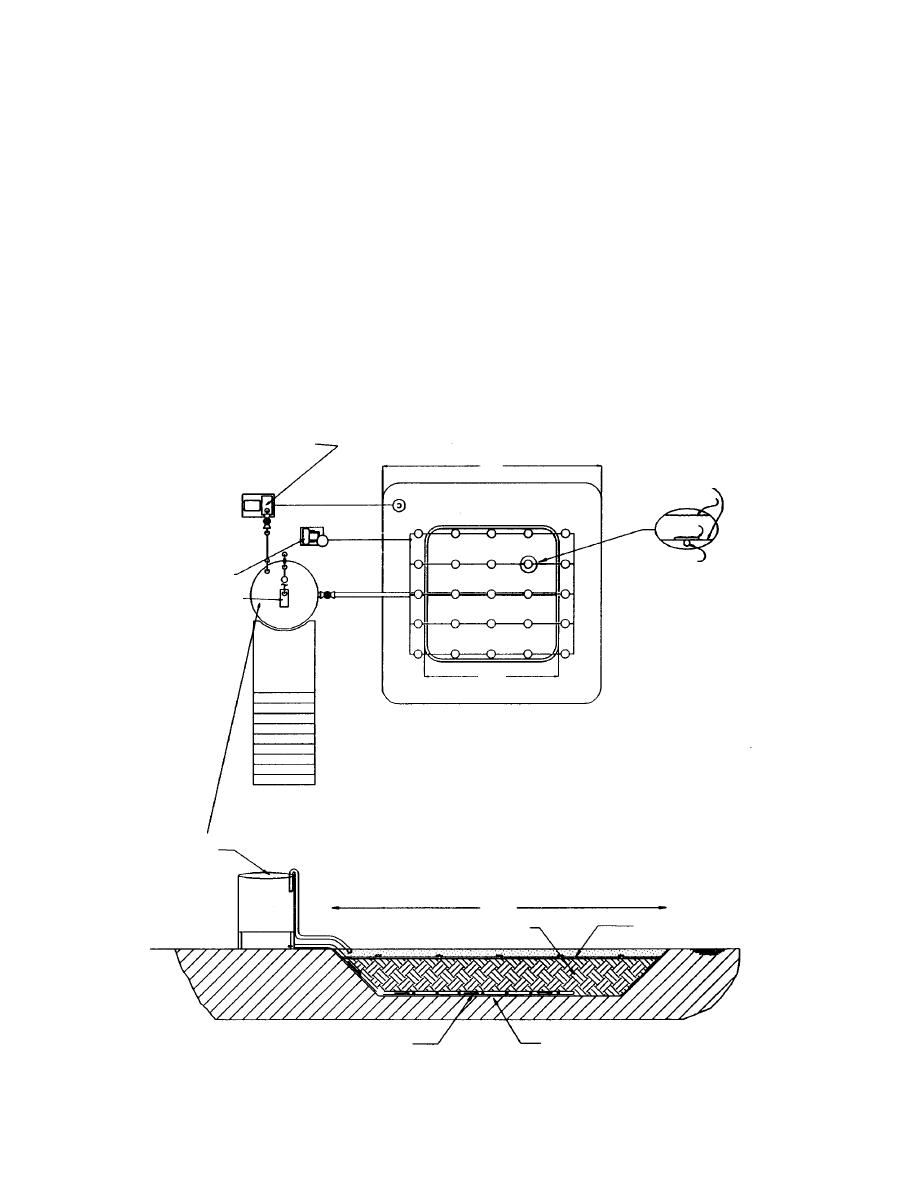
reactors. The concept is to build a lined contain-
Fe, Br, F, Pb, alkalinity, and TPH. Aromatic hydro-
ment area to serve as a bioreactor (Fig. 7). Either
carbons and nitrate analyses, which were required
a pit (generally resulting from the excavation), a
for compliance with the water discharge permit
bermed perimeter, or a combination can be used,
needed to operate of the infiltration gallery, were
depending on available materials. Contaminated
conducted by NTL.
soil is placed into the bioreactor and, through an
inexpensive PVC distribution system, aerated and
Recirculating leach bed
nutrient-amended water is recirculated into the
The recirculating leach bed is a closed-cell
bottom of the bioreactor, upwards through the
system that circulates nutrient-amended water
contaminated soil, and then through overlying
through contaminated soil. Air diffusers add
ponded and aerated water. Skid-mounted mech-
oxygen to the water. The system was designed so
that the lined cell and associated piping could be
anical systems include a mixing tank and circula-
abandoned in place once soils had been remedi-
tion pumps for water and air.
ated. The above-ground mechanical equipment,
which is the primary cost associated with this type
Design
The 26- 26-ft (8- 8-m) pit was lined with a
of system, could then be used at other locations.
Recirculating leachbeds are similar to slurry
nominal 20-mil (0.508-mm-thick), woven, black
TRASH PUMP
26'
SOIL SURFACE
WATER SURFACE
DIFFUSER
DIFFUSER
PIPING
BLOWER
16'
POND BOTTOM
MIX TANK
36'
AERATION SYSTEM
CONTAMINATED SOIL
LINER
WATER CIRCULATION SYSTEM
SCALE AS SHOWN
Figure 7. Recirculating leachbed system (1 ft = 0.3048 m).
15



 Previous Page
Previous Page
